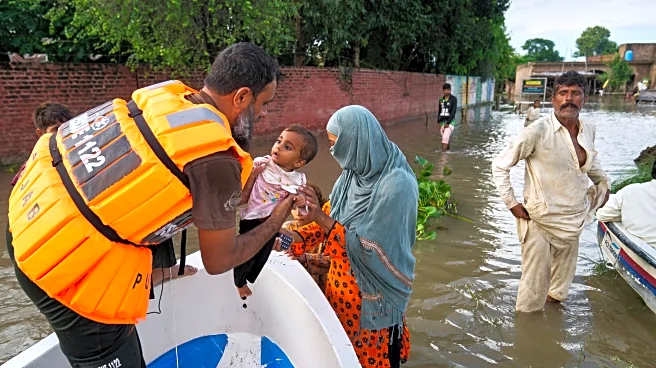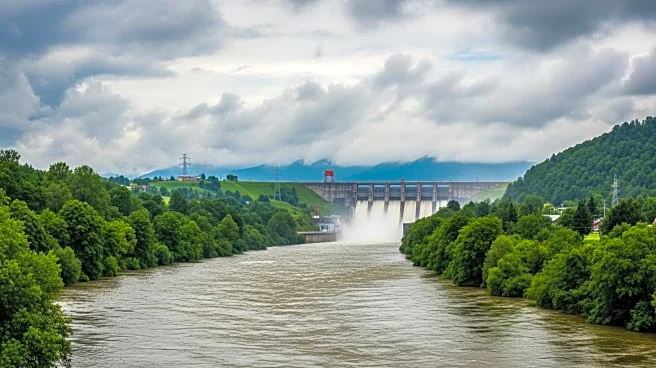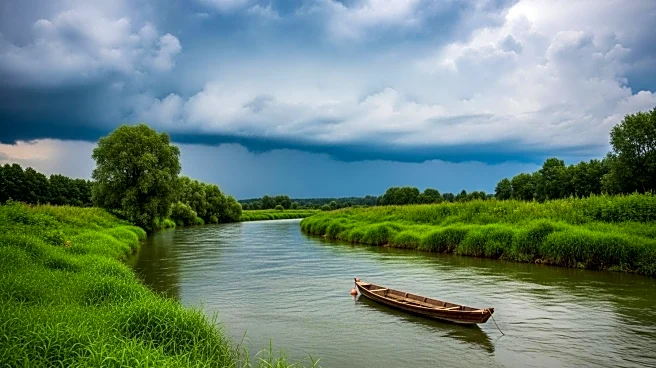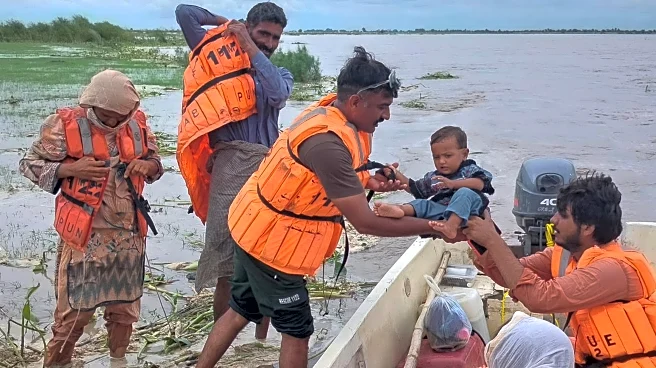What's Happening?
Intense rains have caused flash floods and landslides in Indian-controlled Kashmir's Jammu region, resulting in at least 34 deaths. The heavy rains have also led to significant flooding in Pakistan, displacing over 210,000 people. The flooding has submerged the shrine of Guru Nanak, the founder of the Sikh religion, and prompted mass evacuations in several districts of Punjab. Rescue operations are ongoing, with the Pakistani army assisting in relief efforts. The floods have been exacerbated by the release of water from overflowing dams in India.
Why It's Important?
The floods highlight the vulnerability of South Asia to extreme weather events, which scientists attribute to climate change. The displacement of over 210,000 people in Pakistan underscores the humanitarian crisis unfolding in the region. The situation poses challenges for disaster management authorities and could strain resources as they attempt to provide relief and prevent further casualties. The flooding also impacts religious sites and communities, adding cultural and social dimensions to the crisis.
What's Next?
Authorities are continuing rescue operations and providing relief supplies to affected areas. The Pakistani government has called for army assistance to manage the crisis. With forecasts predicting continued heavy rains, further flooding is possible, necessitating ongoing vigilance and preparedness. The situation may prompt discussions on cross-border cooperation between India and Pakistan to manage shared water resources and mitigate future flood risks.
Beyond the Headlines
The floods may lead to increased scrutiny of infrastructure and disaster preparedness in the region. The impact on religious sites could have cultural implications, affecting local communities and religious practices. Long-term, the event may drive policy changes regarding climate adaptation and international cooperation on environmental issues.













